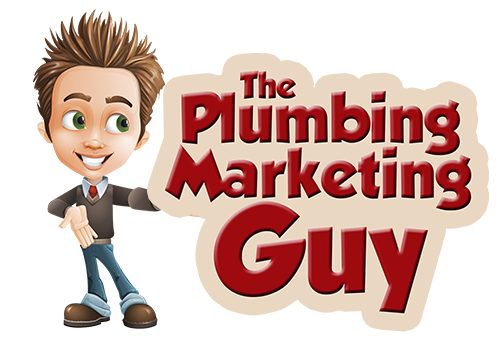From Clicks to Calls: Turning Online Traffic Into Plumbing Customers
June 9, 2025To turn online traffic into plumbing customers, you need to optimize your digital experience—from landing page to follow-up. Whether it’s a homeowner with an emergency or a business planning renovations, converting clicks into calls takes more than just visibility. This guide breaks down five essential strategies to move prospects from browsers to booked jobs.

Optimizing Plumbing Landing Pages
Landing pages are often the first stop for potential customers after clicking an ad. The experience must be seamless and persuasive.
Start by matching your landing page content to your ad. If your ad offers “24/7 Emergency Drain Cleaning,” your landing page should reinforce that message prominently. Inconsistency leads to confusion—and lost leads.
Use headlines with keywords like “Same-Day Plumbing Repair” or “Certified Local Plumbers.” Break text into short paragraphs with bullet points and bolded benefits. Avoid technical jargon. Your goal is clarity and trust.
Incorporate visuals such as team photos, project images, or quick intro videos. Display reviews and trust badges (BBB, Google ratings) prominently. CTAs like “Call Now” or “Request a Free Quote” should be visible without scrolling.
Ensure your page is mobile-optimized. With most plumbing searches happening on smartphones, a slow or broken page can cost you business. Regular A/B testing can help you refine everything from CTA button color to headline format, improving conversion rates over time.
Retargeting Strategies for Plumbers
Not every visitor becomes a customer the first time. Retargeting gives you a second (or third) chance to re-engage lost traffic.
Start with Google remarketing ads. These track users who visited your site and display your ads again while they browse or search. For example, if someone looked at your “water heater replacement” page, you can serve them follow-up ads highlighting that specific service with a limited-time discount.
Build an email list by offering something of value—like a free seasonal maintenance checklist or $25 off the first visit. Once collected, send automated follow-ups with helpful content, tips, and gentle calls to book service.
Tailor retargeting ads based on behavior. Someone who visited your emergency page gets one type of message; someone who looked at “repiping” gets another. Personalized messaging increases relevancy—and conversions.
Live Chat for Contractor Leads
Live chat helps capture leads in real-time, especially when website visitors have questions but aren’t ready to call. Many companies see a 10–50% increase in conversions when using chat tools.
Place your chat widget in the bottom corner of your website, available during business hours or 24/7 with AI bots. Use proactive greetings like “Need help fast?” or “Have a plumbing question?” to start conversations.
Live chat builds trust by providing instant answers—no hold music, no voicemail. It’s especially effective for urgent services like leaks, clogs, or no-hot-water calls.
To avoid overwhelming users, use cookies to limit repeated pop-ups. Train your staff (or chatbot) to ask qualifying questions and gather basic contact info for follow-up if the visitor isn’t ready to book immediately.
Click-to-Call Marketing Tactics
When plumbing emergencies strike, people want immediate solutions. That’s why click-to-call campaigns are so effective. A one-tap call button on an ad or website lets prospects connect with you fast—no forms, no delay.
Start by optimizing Google Ads for mobile. Use extensions like “Call Now” and schedule your campaigns to run during business hours—or all day if you offer 24/7 service.
Use strong CTA copy like “Speak with a Plumber in Minutes” or “Call Now for Immediate Help.” These messages tap into urgency and convenience—two drivers of conversion.
Add click-to-call buttons throughout your website, especially on the homepage, service pages, and landing pages. Make them sticky on mobile so they’re always visible.
Also use geotargeting in your ads. This ensures your call-focused campaigns only reach people within your actual service area, maximizing ROI and minimizing irrelevant leads.
Follow-Up Automation Techniques
Even if a prospect doesn’t book right away, you should never let the lead go cold. Follow-up automation helps you stay top-of-mind and moves people closer to hiring you.
Try these core automation strategies:
- Phone and Text Alerts: Use lead-to-call or lead-to-text tools to reach out within seconds of a form submission. Speed wins in competitive industries like plumbing.
- Email Sequences: Set up a series of follow-up emails that offer value—like maintenance tips, before/after project stories, or seasonal service reminders.
- Automated Scheduling: Let customers book time directly through your website. Tools like Calendly or Jobber sync with your availability and eliminate back-and-forth.
- Review Requests: After a job, automatically send a text or email requesting a Google review. This helps with local SEO and builds social proof.
- Maintenance Reminders: Schedule annual or seasonal reminders for things like water heater flushes or pipe inspections, keeping your business in front of past clients.
With automation, you’re not just closing today’s leads—you’re laying the groundwork for recurring business and long-term loyalty.
For plumbers looking to streamline all of these systems, working with a team that specializes in online plumbing marketing strategies can make implementation easier, faster, and more profitable.
Conclusion
Converting online traffic into booked jobs takes more than a website. It requires a system: optimized landing pages, strategic retargeting, instant support through live chat, mobile-friendly click-to-call features, and smart follow-up automation.
These tools don’t just increase leads—they improve the experience for your future clients, making it easier for them to trust and choose you.
Start implementing one strategy at a time, measure results, and keep improving. That’s how you turn clicks into calls—and calls into customers.
